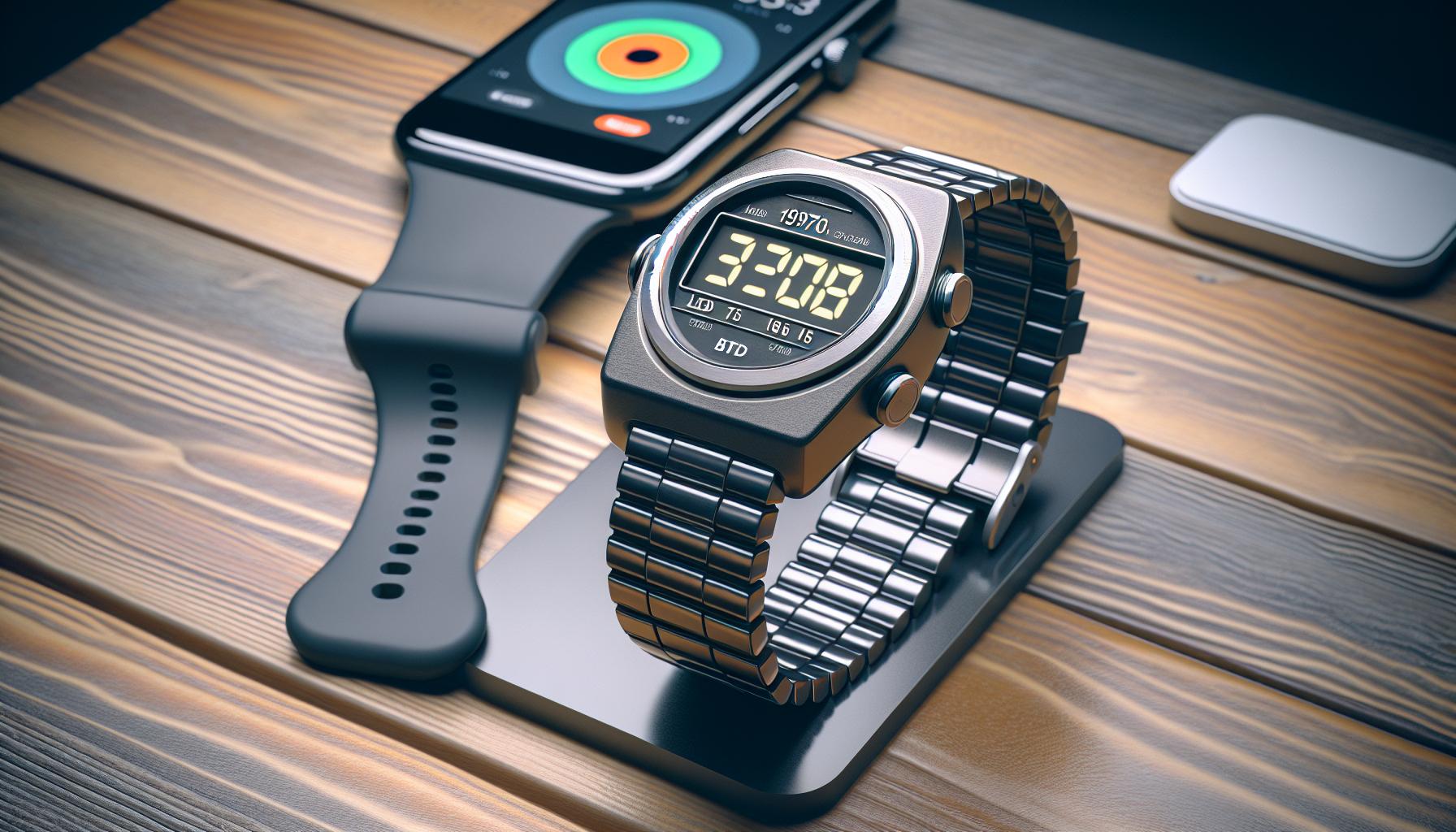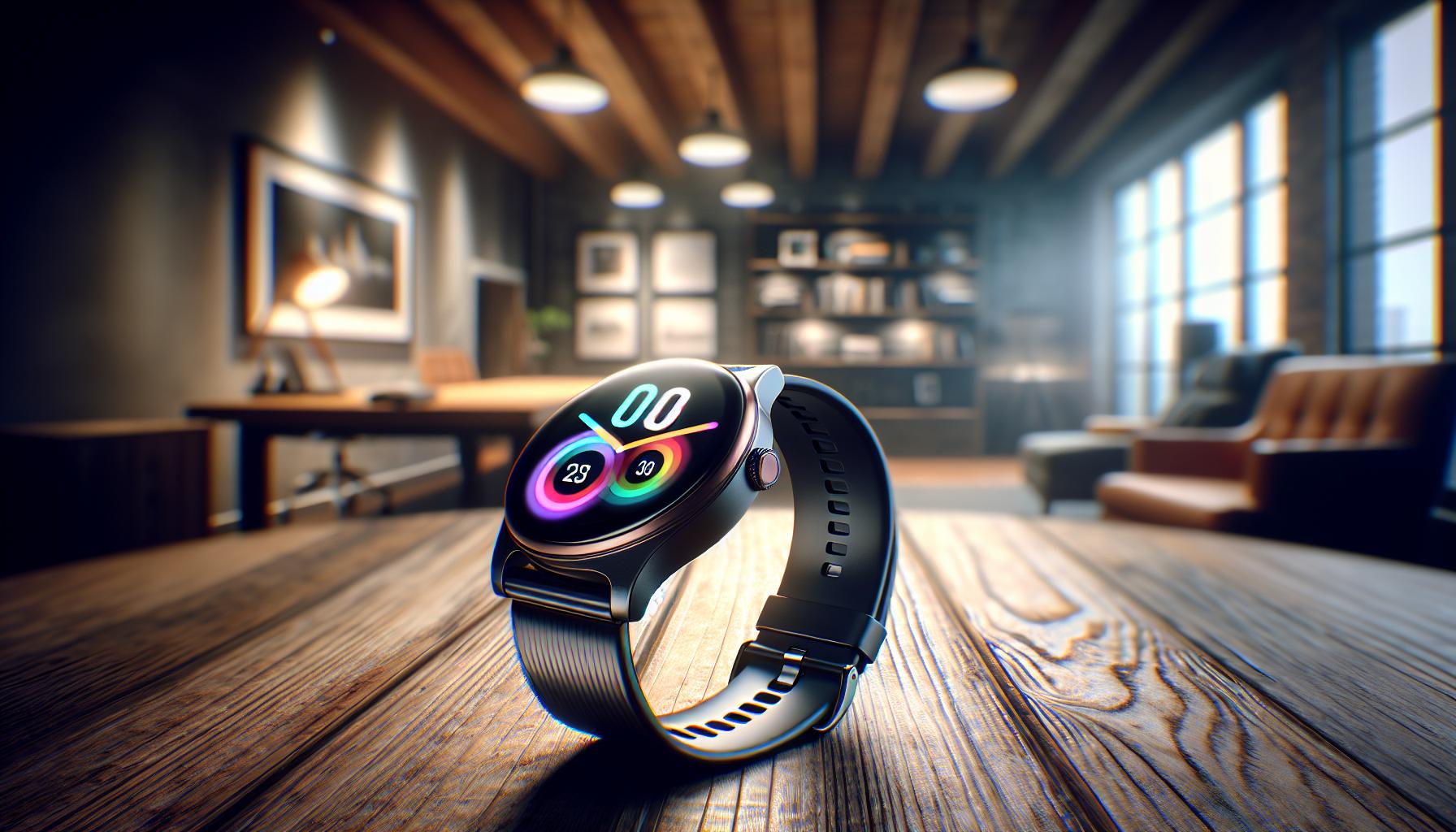Smartwatches have transformed the way we interact with technology, blending the convenience of a watch with the functionality of a smartphone. I’ve often marveled at how these sleek devices have become essential in our daily lives, but it’s fascinating to consider when it all began. The journey of smartwatches is a captivating tale of innovation that dates back several decades.
The first concepts of smartwatches emerged in the 1970s, but it wasn’t until the 1990s that they started to take shape. I’ll explore the pivotal moments and key players that brought these devices from mere ideas to the high-tech gadgets we rely on today. Join me as I delve into the history of smartwatches and uncover the milestones that led to their evolution.
Key Takeaways
- Origins of Smartwatches: Smartwatches began as simple digital timepieces in the 1970s, evolving through significant innovations such as the Pulsar in 1972 and Seiko’s Data 2000 in the 1980s.
- Pivotal Milestones: Key developments include the introduction of the Sony Smart Watch in 1998, Microsoft’s SPOT technology in 2004, and the transformative launches of Samsung’s Galaxy Gear in 2012 and Apple’s Watch in 2015.
- Blending Technology with Fashion: Early smartwatches like those from Fossil integrated technology with style, paving the way for modern wearables that are both functional and aesthetically appealing.
- Health and Fitness Revolution: Smartwatches emerged as powerful health trackers, offering features like heart rate monitoring and fitness analytics that have transformed how users approach personal health.
- Streamlined Communication: These devices allow users to receive notifications and manage tasks directly from their wrists, enhancing convenience and productivity in daily life.
- Impact on App Development: The rise of smartwatches has led to a surge in specialized app development, with a focus on fitness, productivity, and security, catering to the diverse needs of users.
When Were Smartwatches Invented
Smartwatches trace their origins to the 1970s, featuring basic functionalities like timekeeping and simple alarms. The first notable smartwatch, the Pulsar, debuted in 1972, integrating a digital display and quartz technology.
In the 1980s, Seiko released the Data 2000, enhancing capabilities with data storage and simple applications, paving the way for future advancements. The 1990s saw the introduction of the Sony Smart Watch, which allowed users to access various applications and connect with mobile devices.
The early 2000s marked a turning point with the rise of wearable technology. Fossil launched a series of internet-connected watches, while IBM and Nokia explored more advanced features. In 2004, the Microsoft Smart Personal Object Technology (SPOT) smartwatch emerged, delivering real-time data like weather updates and news.
By 2012, the smartwatch landscape transformed dramatically with the launch of Samsung’s Galaxy Gear, closely followed by the release of Apple’s Apple Watch in 2015. These products combined elegant design with extensive functionality, including fitness tracking, app integration, and notifications.
Smartwatches now function as comprehensive health trackers, communication devices, and personal assistants. As technology advances, smartwatches continue to evolve, integrating features like heart rate monitoring, GPS capabilities, and mobile payment options, securing their place in daily life.
Early Innovations in Wearable Technology

Wearable technology has roots that trace back several decades. I’ll discuss two significant milestones: the first digital watches and the emergence of the personal digital assistant (PDA).
The First Digital Watches
The introduction of the first digital watches in the early 1970s marked a significant leap forward in wearable technology. In 1972, Pulsar released a pioneering digital watch that featured a LED display and quartz technology. This innovation not only provided timekeeping but also set the stage for more advanced functionalities. Following this, in the 1980s, Seiko’s Data 2000 emerged, incorporating data storage and basic applications, which added value beyond mere timekeeping. Such advancements paved the way for future developments, leading up to the integration of technology into everyday wearables.
The Birth of the PDA
The concept of the personal digital assistant (PDA) took off in the late 1990s, further influencing the trajectory of wearable technology. The first PDA, the Palm Pilot, launched in 1996 and revolutionized the way users managed their schedules and contacts. This device was a precursor to multi-functional smartwatches, demonstrating the potential for portable computing. As PDAs evolved, they began to incorporate features like email access and connectivity with other devices, laying the groundwork for the functionality we expect in today’s smartwatches.
The Evolution of Smartwatches

Smartwatches have undergone significant changes since their inception. Each decade brought innovations that shaped their functionality and design, influencing their integration into everyday life.
Key Milestones in Development
- 1972 – Pulsar: The first digital watch with a quartz movement. This watch set the groundwork for future innovations in wearables.
- 1983 – Seiko Data 2000: Introduced data storage, a precursor to the app functionality seen in modern smartwatches.
- 1998 – Sony Smart Watch: Enabled users to connect to mobile devices, marking the beginning of smartwatch connectivity.
- 2004 – SPOT Smartwatch: Microsoft launched its Smart Personal Object Technology, offering real-time data updates, paving the way for more comprehensive functionalities.
- 2012 – Samsung Galaxy Gear: Released as a smartwatch that integrated with mobile devices, offering basic notifications and fitness tracking.
- 2015 – Apple Watch: Elevated the smartwatch market with advanced health monitoring, customizable apps, and seamless integration with iOS.
- Apple: Revolutionized the industry with the Apple Watch, setting high standards for design and functionality, particularly in health tracking and app integration.
- Samsung: Introduced the Galaxy Gear, emphasizing connectivity and user experience, impacting smartphone synchronization.
- Garmin: Focused on fitness and outdoor activities, providing specialized features like GPS tracking and health analytics.
- Fitbit: Pioneered health tracking wearables, integrating fitness metrics that influenced modern smartwatch design.
- Fossil: Blended fashion with technology, offering stylish options without sacrificing smart features, appealing to a broader audience.
The First True Smartwatches

The evolution of smartwatches took a significant leap with the introduction of devices that combined advanced technology with practical functionality.
Fossil’s internet-connected watches in the early 2000s laid the groundwork for future developments. The Microsoft Smart Personal Object Technology (SPOT) smartwatch debuted in 2004, offering real-time data displays and connecting with various services, marking a pivotal moment in wearable tech.
In 2012, Samsung launched the Galaxy Gear, which featured a camera, notifications, and the ability to integrate with smartphones, establishing a new standard for smartwatch capabilities. This device prompted other tech companies to innovate in the smartwatch space.
Apple entered the market in 2015 with the Apple Watch. This smartwatch integrated fitness tracking, app connectivity, and a sleek design. Its popularity accelerated the acceptance of smartwatches, transforming them into essential companions for many users.
Other notable models emerged during this period, including the Garmin Forerunner series, which focused on fitness tracking. Fitbit’s offerings also contributed to health-oriented features, making smartwatches increasingly versatile and user-friendly.
These first true smartwatches demonstrated the blend of technology and fashion, setting the stage for a diverse range of devices in today’s market.
The Impact of Smartwatches on Technology
Smartwatches significantly impacted the technology landscape, transforming how I interact with devices and manage daily tasks. These wearable devices integrated seamlessly with smartphones, allowing for notifications and communications directly on my wrist, enhancing convenience and accessibility.
Smartwatches pioneered health and fitness tracking by incorporating advanced sensors. I can monitor heart rates, track workouts, and analyze sleep patterns in real-time. This shift towards health orientation shaped the fitness industry, driving the development of more comprehensive health apps and connected devices.
Smartwatches also revolutionized the way I approach information consumption. With quick access to news, weather, and notifications, I stay informed without pulling out my phone. This integration streamlined daily routines, enabling multitasking and efficient time management.
The impact on app development is notable. The emergence of smartwatch platforms spurred developers to create specialized applications, catering to diverse interests and needs. Popular categories include fitness, productivity, and entertainment apps, enhancing the overall user experience.
Data privacy and security concerns emerged alongside smartwatch advancements. As these devices collect sensitive health and personal data, ensuring robust security measures became crucial. Companies prioritize user privacy through secure data transmission and storage protocols.
The influence of smartwatches extends beyond personal use. Businesses harness their potential for improved communication and efficiency. Employees utilize smartwatches for notifications, scheduling, and task management, boosting productivity and collaboration.
Smartwatches fundamentally changed technology interaction, fitness tracking, app development, and data security. Their integration into daily life has redefined expectations for wearable technology.
Smartwatches History
The journey of smartwatches from their humble beginnings to the sophisticated devices we rely on today is truly fascinating. Each milestone has contributed to their versatility and significance in our lives. I appreciate how these devices have evolved to become essential tools for health tracking, communication, and productivity.
As smartwatches continue to advance, I’m excited to see how they’ll further integrate into our daily routines. With ongoing innovations and a focus on user experience, it’s clear that smartwatches are here to stay, shaping the future of wearable technology.



